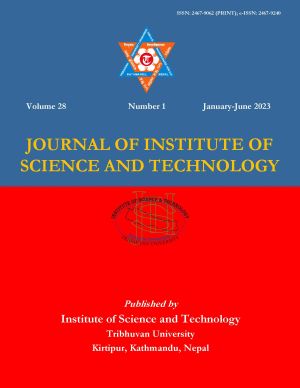Analysis of X-Ray Emission From Source TXS 0506+056 Using Xmm-Newton Observations
DOI:
https://doi.org/10.3126/jist.v28i1.53585Keywords:
Chi-squared minimization procedure, spectral modeling, variability, X-ray flaresAbstract
We report the findings of analysis of X-ray flares in TXS 0506+056 using XMM-Newton data obtained from the maximum likelihood analysis. Two publicly available XMM-Newton X-ray observations for TXS 0506+056 were analyzed to study the spectrum and light curves. The spectrum curves revealed two energy bumps, with the lower energy bump at 0.5 keV and the higher energy bump at 6 keV. For observational IDs 0083960101 and 0083960201, the integrated flux for hard X-ray (2–10 keV) is 1.835 10-12 ergs cm-2 s-1 and 1.813 10-12 ergs cm-2 s-1 with corresponding uncertainty range of (1.754–1.913) 10-12 ergs cm-2 s-1 and (1.490–3.515) 10-12 ergs cm-2 s-1, respectively. The best fit models for X-ray data observations of observational IDs of 0083960101 and 0083960201 were phabs (gaussian+power-law) and Tbabs (gaussian+log-parabola) with reduced chi squared values of 1.56 and 1.05, respectively. A turning point at around 2 keV appeared in the spectrum curve, suggesting that the gaussian model only applies for soft X-ray (0.3–2 keV), while the power law and the log parabola model are the best fit models for hard X-ray (2–10 keV). Observation ID 0850780101 shows that the source TXS 0506+056 has a fractional variability of 1.4 %, while Observation ID 0850780201 shows a higher fractional variability of 3.0 % which indicates brightness varies over time. A greater disparity in the source's rise time suggests a higher degree of variability in its brightness.
Downloads
Downloads
Published
How to Cite
Issue
Section
License
Copyright (c) 2023 Institute of Science and Technology, T.U.

This work is licensed under a Creative Commons Attribution-ShareAlike 4.0 International License.
The views and interpretations in this journal are those of the author(s). They are not attributable to the Institute of Science and Technology, T.U. and do not imply the expression of any opinion concerning the legal status of any country, territory, city, area of its authorities, or concerning the delimitation of its frontiers of boundaries.
The copyright of the articles is held by the Institute of Science and Technology, T.U.




